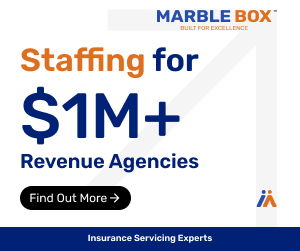How much longer will the steady increase in insurance agency values continue? Merger and acquisition activity kept up its torrid pace in early 2017. Consulting firm OPTIS Partners reported that 178 transactions in the US and Canada were announced in the first quarter of the year, a sharp increase from the 115 reported during the same period in 2016. The rolling twelve-month count of announced transactions jumped from 300 to 520 between the end of 2013 and the first quarter of 2017.
The increase in transactions has been welcome news for agency sellers, who have been seeing “very aggressive M&A valuations by buyers,” according to Dan Menzer of OPTIS Partners. Jon Persky of Optimum Performance Solutions echoes that assessment, calling current valuations “high and steady.”
A combination of persistently low interest rates and an abundance of private equity money looking for homes seems to be driving valuations. “There is a solid group of private equity and national agency buyers that are looking over the larger end of the standard lines P&C market at any given time,” says Sam Patterson, CEO of Springtree Group in Dallas. “Both of these groups are paying historically high multiples for this type of shop.”
However, some foresee the good times coming to an end before long. Marc Greene of General Insurance Brokerage expects rising interest rates and oil prices to cramp agency valuations. “As rates increase, so does the cost of money,” he explains. “Valuations are driven by free cash flow after debt service. The higher the cost to borrow, the less a buyer can pay for an agency or book of business.”
As Congress considers reforms to the tax system, Persky warns that the laws of supply and demand might also hurt valuations. “More agencies may be motivated to sell if tax laws change and capital gains rates drop. This could depress prices since there will be a larger number of sellers.”
Menzer says that a number of factors could cause valuations to decline, including interest rates, general economic or industry conditions, cutbacks in lending, or pullbacks from private equity (PE) firms. He explains that PE-backed firms will buy agencies at a certain multiple (perhaps six to eight) of EBITDA (earnings before interest, taxes, depreciation or amortization). They expect to receive higher multiples when they sell. However, “If these larger PE transactions don’t continue to command the premium multiples, for whatever reason, future transactions of individual brokers will get pushed down.”
Even if prices start to level off or come down, agencies that have positioned themselves well will still be able to command higher bids than their peers. Agencies of the same revenue size may have significantly different values, due to a number of factors. Profitability is key. Greene emphasizes the importance of managing expenses, including payroll, at an efficient level so as to maximize profitability. Persky draws a line directly between profitability and a productive staff. Greene looks for an up-to-date agency management system; strong account retention coupled with low loss ratios; and a good mix of carriers, with the bulk of the book spread between five to ten of them.
Unique attributes, such as special market niches, can also improve value, Menzer says, along with the agency’s growth history and its location. He also adds that, as with any sale, a strong presentation by the seller and the effect it has on the buyer’s perception of the agency are important.
Preparations for selling an agency should begin years before it will happen. “Few things will yield immediate value, otherwise everyone would do it,” Menzer says. Patterson advises sellers to think like buyers, emphasizing growth and verifiable and impressive financials. He says the quality of the financials can mean the difference in a buyer’s ability to get the deal financed. “At the end of the day, total revenue is important, but profits and the ability to properly portray these numbers with your financial tools are critical.”
Greene warns that agency owners may not realize the importance of certain factors such as borrowing costs. Persky cautions that buyers may have unrealistic expectations about profitability after the seller has left the scene. “Someone has to do what he was doing,” he says, “and that is a cost the buyer will incur and have to consider in determining purchase price.”
Menzer points out that the process is subjective; an agency’s value is still partly in the eye of the beholder. However, a seller who has built a strong agency and who presents the business effectively will still come out ahead. “(I)t’s still very much a people/culture/relationship business, and buyers will work harder to get a firm they like, respect and feel comfortable with,” he says. “Being the best they can at what they do, having a well-trained staff, and presenting a professional image all contribute to the final outcome.”
Looking to start an Agency? Get detailed information by reading our Guide to Starting an Insurance Agency











